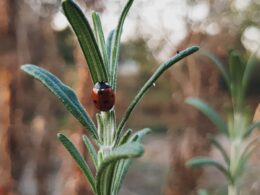Do you want to know the best time to cut back your perennials? It’s important to do it at the right time to ensure their health and longevity. Cutting back at the wrong time can cause damage to the plant and decrease its ability to withstand the harsh winter months.
But don’t worry, we’ve got you covered with this guide on when to cut back your perennials.
First, it’s important to consider your climate and the type of plant you have. Depending on where you live, the best time to cut back your perennials may vary. Some plants may also require different pruning techniques.
It’s important to do your research or consult with a professional to ensure you are doing what’s best for your specific plant.
With these tips, you’ll be able to confidently cut back your perennials and ensure their health for years to come.
Consider Your Climate and Plant Type
Before grabbing those shears, take into account the climate and type of plant you’re dealing with so you don’t accidentally harm your beloved garden babies.
First, consider the watering frequency and soil pH of your perennials. If you live in a dry climate, it’s best to cut back your plants in the fall when the soil is still moist from summer rains. On the other hand, if you live in a wet climate, it’s best to wait until early spring when the soil has had a chance to dry out a bit. Additionally, if your soil is acidic, it’s best to cut back your plants in the fall when the soil is still warm and moist.
Secondly, take into account the sunlight exposure and growth habits of your perennials. If your plants are sun-loving, it’s best to cut them back in the fall when the days are shorter and the sun is less intense. This will help prevent sunscald on the newly exposed foliage. If your plants have a spreading growth habit, it’s best to cut them back in the fall to prevent them from taking over your garden. However, if your plants have an upright growth habit, it’s best to wait until early spring to cut them back so you can see the new growth emerging from the base.
In summary, before cutting back your perennials, consider the watering frequency, soil pH, sunlight exposure, and growth habits of your plants. By doing so, you’ll ensure that you’re cutting back your plants at the optimal time for their health and growth. Remember, a little bit of planning and patience can go a long way in keeping your garden looking beautiful year after year.
Wait for the First Frost
You’ll want to consider waiting for the first frost before tackling your perennials, as this can help promote healthier growth in the long run. Although it may seem counterintuitive to let your plants sit in the cold, there are actually several benefits to waiting until after the first frost to cut back your perennials. Here are a few reasons why:
-
Benefits of waiting:
- The frost will kill off any remaining pests or diseases that may be lingering on your plants, which can help prevent these issues from spreading to other areas of your garden.
- Waiting until after the first frost allows your perennials to fully enter their dormant phase, which means they’ll be less likely to experience stress or damage from pruning.
- Cutting back your perennials in the fall can stimulate new growth, which can leave your plants vulnerable to winter damage. Waiting until after the first frost ensures that your plants will have time to prepare for the colder months ahead.
-
Risks of waiting:
- If you wait too long to cut back your perennials, they may become overgrown and difficult to manage come springtime.
- Some perennials, such as those with woody stems or evergreen foliage, may not benefit from waiting until after the first frost to be pruned. In these cases, it’s best to consult a gardening expert or do some research before making any cuts.
Overall, waiting until after the first frost to cut back your perennials can be a smart move for your garden’s long-term health. Just be sure to pay attention to your plant type and climate, and don’t wait too long to start your pruning.
Is Cutting Back Lupins Similar to Cutting Back Other Perennials?
Cutting back lupins in different seasons is similar to cutting back other perennials. Pruning helps maintain their shape and promotes new growth. In spring, remove dead stems and provide adequate sun exposure. After summer blooming, trim back faded flowers to encourage additional blossoms. In fall, pruning promotes healthy growth next season. Regular cutting back ensures vibrant lupins and thriving perennials.
Pruning Techniques
When it comes to pruning your perennials, there are a few key things to keep in mind. First and foremost, you’ll need the right tools for the job. This might include a pair of hand pruners, loppers, and a pruning saw.
Once you have your tools, it’s important to know how to properly cut back your perennials to ensure healthy growth next season.
Tools You’ll Need
Tools you’ll need:
Grab your trusty shears and get ready to give your garden a much-needed refresh. But before you start cutting back your perennials, make sure you have the right tools for the job.
Gardening gloves are a must to protect your hands from cuts and scratches. You’ll also need a pair of sharp pruning shears to make clean cuts and prevent damage to the plant.
When using pruning shears, safety precautions should always be taken. Make sure the blades are sharp to avoid crushing the plant and causing unnecessary damage. Also, keep your fingers away from the blades and never cut towards yourself.
After you’re finished, be sure to wipe down your tools with a disinfectant to prevent the spread of disease. With the right tools and proper maintenance tips, cutting back your perennials will be a breeze.
How to Properly Cut Back Perennials
To keep your garden healthy and vibrant, it’s important to understand the proper technique for trimming your perennials.
First, you need to know the cutting frequency of your plants. Some perennials need to be trimmed back after blooming, while others can be cut back in the fall. Be sure to research the specific needs of each plant before cutting.
Next, it’s important to prepare the soil before cutting back your perennials. Remove any dead leaves or debris from the ground around the plant. This will help prevent disease and pests from taking over.
Once the soil is clean, use sharp pruning shears to cut the plant back to a healthy height. Make sure to cut at a 45-degree angle to promote new growth.
By following these simple steps, you can keep your perennials healthy and beautiful for years to come.
Clean Up and Dispose of Debris
You can easily tidy up your garden by removing any debris left behind by your perennials. After cutting back your plants, you’ll likely have a pile of leaves, stems, and other organic matter.
Instead of throwing it away, consider composting it. Composting options include creating a compost bin or pile, or using a compost tumbler. This not only helps reduce waste, but it also provides a great source of nutrients for your garden.
If you choose not to compost, be sure to dispose of the debris properly. Leaving it in your garden can create habitats for unwanted wildlife, such as rodents. It can also create a breeding ground for pests and diseases that can harm your plants.
Bag up the debris and dispose of it in your local yard waste collection or composting program.
Taking the time to clean up and dispose of debris left behind by your perennials is an important step in maintaining a healthy and safe garden. By composting or properly disposing of the debris, you can help reduce waste, create habitats for beneficial wildlife, and prevent the spread of pests and diseases.
Post-Pruning Care
After pruning your plants, it’s important to give them some extra care to ensure their health and growth. Here are some things you can do to help your plants recover from the pruning process:
-
Mulching Benefits: Mulching is a great way to help your plants retain moisture and regulate soil temperature. This is especially important after pruning, as the plants will need extra help in retaining moisture. Mulching can also help control weeds, which can compete with your plants for water and nutrients. Organic mulches like shredded leaves, grass clippings, or straw will also decompose over time, adding organic matter to the soil.
-
Soil Amendment: After pruning, it’s a good idea to amend the soil around your plants to help them recover. You can do this by adding compost or other organic matter to the soil. This will help improve soil structure, increase soil fertility, and provide essential nutrients to your plants. You can also add fertilizer to the soil to give your plants an extra boost of nutrients.
By taking these steps, you can help your plants recover from pruning and ensure their long-term health and growth. Remember to mulch and amend the soil around your plants to give them the best chance for success. With a little extra care, your plants will be thriving in no time!
Frequently Asked Questions
Can I cut back my perennials before the first frost?
If you’re wondering whether it’s safe to cut back your perennials before the first frost, the answer is yes!
Pruning techniques can vary depending on the type of plant you have, but in general, cutting back early has many benefits. By removing dead or damaged foliage, you can help prevent disease and pests from spreading. Plus, cutting back early can help your plants conserve energy for the next growing season.
So go ahead and grab those shears, just be sure to follow proper pruning techniques and leave a few inches of stem above the ground. With a little care and attention, your perennials will be ready to thrive come spring!
How often should I prune my perennials?
If you want to keep your perennials looking healthy and beautiful, it’s essential to know the right timing tips and pruning techniques. Timing is everything when it comes to pruning perennials, and you should prune them regularly to keep them in good shape.
Most perennials need to be pruned once or twice a year, depending on their growth rate and flowering habits. Pruning in the spring is usually the best time, as it stimulates new growth and helps to maintain the plant’s shape. However, some perennials benefit from a fall pruning, which helps to prevent disease and insect problems.
Regardless of when you prune, always use sharp, clean tools and avoid cutting too close to the ground. With these simple tips, you can keep your perennials healthy and thriving for years to come.
Should I dispose of the debris in a specific way?
Proper disposal of debris from pruning your perennials is important for minimizing the environmental impact. When cutting back your perennials, it’s best to dispose of the debris in a compost pile or yard waste bin.
Avoid throwing it in the trash, as it’ll end up in a landfill and take longer to decompose. Composting is a great way to recycle the debris and turn it into nutrient-rich soil for your garden.
Proper disposal not only benefits the environment but also helps maintain a safe and healthy garden for you and your family.
Will pruning my perennials affect their growth in the next season?
Pruning techniques and timing considerations can greatly impact the growth of your perennials in the next season. It’s important to prune at the appropriate time and using the proper techniques to ensure your plants stay healthy and vibrant.
When pruning, make sure to remove any dead or diseased foliage, as well as any branches that are crossing or rubbing against each other. Timing is also crucial – pruning too early or too late can have negative effects on your perennials.
By following proper pruning techniques and timing considerations, you can help ensure your perennials will continue to thrive for years to come.
What are some common mistakes to avoid when pruning perennials?
When it comes to pruning perennials, there are some common mistakes you should avoid. First, make sure you’re using the right pruning technique for the plant you’re working on. Some perennials require a more severe cut back, while others only need a light trim.
It’s also important to time your pruning correctly. Pruning too early in the season can result in damage from frost, while pruning too late can leave the plant vulnerable to disease. To avoid these issues, make sure you research the best timing strategies for each specific plant.
By following these pruning techniques and timing strategies, you can help your perennials stay healthy and strong for seasons to come.
Conclusion
So, you’ve learned the best time to cut back perennials. But what does this mean for you? It means you can now confidently tackle pruning your plants and enjoy the benefits of a healthier and more beautiful garden.
Remember to consider your climate and plant type, wait for the first frost, use proper pruning techniques, and clean up and dispose of debris. Lastly, don’t forget to give your plants some post-pruning care to help them recover and thrive.
By following these tips, you’ll be able to maintain a gorgeous, flourishing garden year after year. Happy pruning!








